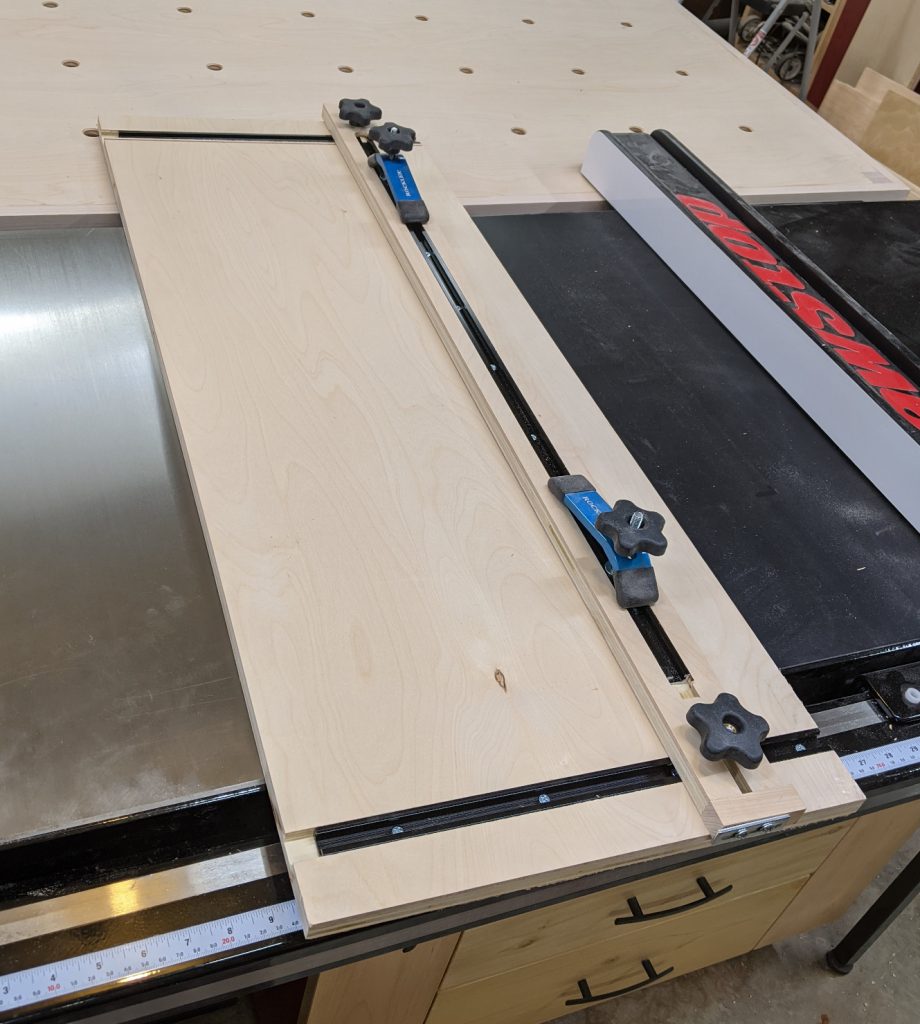
Tapering jig, revisited
I had a little accident with my tapering jig recently. I was using it to true up the leg stock for my new outfeed table, and it fell off the back end of the saw. The piece was fine, but the sled broke at the routed T-slot at the back, so I couldn’t use it anymore. My fault for not rigging up an outfeed solution while I built the table. I figured I’d build another when I got the chance.
Well, I had a chance today. Really, I needed it, and I had large cutoffs left over from the outfeed table. But rather than just make a replacement base I thought about how I really use it most of the time, the weaknesses I’d observed, and I designed a new one that would take those things into account. Like this:

The changes are mostly minor, but they will help a lot:
- The base is 40 inches long instead of 36, to take longer pieces.
- The base is 15-1/2 inches wide instead of 11, to take wider pieces.
- Instead of routing T-tracks, I routed dadoes and filled them with aluminum T-track instead.
- There is no runner underneath; instead, it will be guided by the rip fence.
These came about because of the way I’ve been using the jig, mostly. I’ve actually used it much more often to true up the first edge of boards than to cut tapers. For that, a little more length and width is extremely helpful, and guiding it by the rip fence means I have more flexibility to work with a piece that is longer than the jig (clamp a board to the fence to capture the edge and I can run about 2 feet longer than the jig safely).
Using aluminum T-tracks hopefully means less deflection in the jig’s fence. The old one didn’t bow as badly as the original Rockler jig, but it didn’t stay flat either. And if I drop the jig again, they are less likely to break and easier to replace if they do.
One thing I did have to be careful of, though, was to keep the aluminum well away from the saw blade. My old Delta wouldn’t have cared, but the SawStop will get triggered if it touches aluminum unless I have it in bypass mode, which defeats the purpose of buying a SawStop. So I left 3/4 inch between the start of the aluminum and the cut line of the jig.








Recent Comments